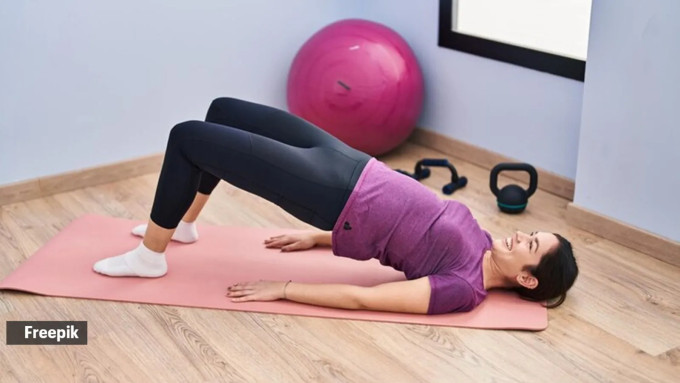Are you inspired by Rakul Preet Singh’s 55kg glute bridge attempt? Here’s how to do it correctly
Back from her holiday, Rakul Preet Singh is training hard in the gym to lose the “holiday calories”. Sharing a glimpse of her recent attempt at performing 55 kg glute bridge, the Thank God actor shared, “I wonder why it’s so easy to gain and a pain to shed? Getting rid of the holiday calories. One day at a time …slow and steady maintaining the balance and harmony of body! @asv_ironforlife #55kg glute bridges”
What is the significance of 55 kg glute bridges?
The significance of a 55-kilogram glute bridge lies within the realm of strength training and its impact on overall fitness and muscle development. To delve into this, it’s essential to understand the glute bridge exercise, the role of weight resistance, and the broader context of fitness goals.

Fitness expert Garima Goyal described a glute bridge as a fundamental exercise that primarily targets the gluteal muscles, comprising the gluteus maximus, medius, and minimus. It involves lifting the hips off the ground while keeping the shoulders, hips, and knees in alignment, forming a straight line from the shoulders to the knees at the top of the movement. “This exercise is renowned for its effectiveness in activating and strengthening the glutes, which play a crucial role in hip extension, pelvic stability, and overall lower body function,” said Goyal.
Notably, strong glutes contribute to better posture, enhanced athletic performance, and reduced risk of injury. “The gluteal muscles help in various movements, including walking, running, and jumping. As such, the ability to perform a 55-kilogram glute bridge suggests not only strength but also improved functional capacity in daily activities and sports,” said Goyal.
Now, introducing weight to a glute bridge amplifies its intensity and elevates the level of resistance, thereby promoting muscle growth and strength development. “The decision to use 55 kilograms as the resistance is subjective and depends on individual fitness levels, goals, and progress. For some, 55 kilograms might represent a substantial challenge, signifying progress and advancement in their strength training journey,” said Goyal.
Why does progressive overload matter in strength training?
In the realm of strength training, progressive overload is a fundamental principle. This involves gradually increasing the resistance or difficulty of an exercise to stimulate ongoing improvements in muscle strength and size. “The 55-kilogram glute bridge can be seen as a milestone in this progression, indicating that the individual has reached a level of strength where lifting this amount of weight is not only possible but also manageable with proper form,” said Goyal.
 Do you do glute bridges? (representative) (Source: Freepik)
Do you do glute bridges? (representative) (Source: Freepik)
Muscle growth, or hypertrophy, is another aspect to consider. Goyal said that when performing exercises with added resistance, such as the 55-kilogram glute bridge, the muscles undergo microtrauma. “In the recovery process, the body repairs and builds muscle tissue, leading to increased muscle size and strength over time. Therefore, achieving a significant weight in the glute bridge can be a symbol of the individual’s dedication to muscle development,” said Goyal.
What to keep in mind?
Maintain proper alignment – Ensure that your feet, knees, and hips stay aligned throughout the movement. Avoid letting your knees collapse inward.
Avoid overarching – Keep a natural curve in your lower back without overach. “Overarching can strain your lower back,” said Goyal.
Activate core muscles – Engage your core by pulling your belly button in. This helps stabilise your spine during the movement.
Controlled movement – Lift and lower your hips in a controlled manner to prevent jerky movements. This enhances muscle engagement and reduces the risk of injury.
Focus on glute squeeze – Emphasise squeezing your glutes at the top of the bridge. This ensures that the glute muscles are actively involved.
Breathing – Inhale as you prepare for the lift. Exhale as you lift your hips and squeeze your glutes. Inhale as you lower your hips back down.
Adapt to your fitness level – If you’re a beginner, start with body weight and gradually add resistance as you progress. Advanced individuals can incorporate weights or resistance bands, said Goyal.
Listen to your body – If you feel any pain, especially in the lower back, readjust your form or decrease the weight, Goyal said.
View this post on Instagram
A post shared by Rakul Singh (@rakulpreet)
Disclaimer: The copyright of this article belongs to the original author. Reposting this article is solely for the purpose of information dissemination and does not constitute any investment advice. If there is any infringement, please contact us immediately. We will make corrections or deletions as necessary. Thank you.





